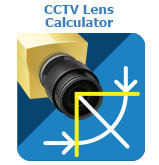10 Common Mistakes to Avoid in Security Camera Installation
In this guide, we focus on educating you about home security systems, specifically addressing the installation of security cameras. We understand that setting up a security camera system can seem overwhelming, especially given the range of technical details involved. To help you navigate through this process, we will highlight and explain the top 10 common mistakes that people often make during security camera installation. Our aim is to empower you with the knowledge you need to avoid these pitfalls and thus, enhance the safety of your home. Let’s get started!
Security Camera Field of View
Mistake 1: Field of View is Too Wide
One common misunderstanding many people have is thinking that having a wider field of view with security cameras is always better. While it’s true that wide-angle cameras are excellent for detection and observation, they can pose challenges when it comes to identification. A wider field of view often results in a lower concentration of pixels on a given target, making it harder to accurately identify specific details or individuals. To avoid this mistake, strike a balance between wide-angle cameras for observation and narrower fields of view for identification zones.
How High to Install Security Camera
Mistake 2: The Camera is Installed Too High
The height of your security cameras is also critical. Installing them too high could result in a view limited to the top of people’s heads when they come into the identification range. A good rule of thumb for mounting cameras is around 3 meters, or about 10 feet high. To avoid this mistake, ensure that your cameras are installed at an appropriate height that allows for clear and detailed footage of individuals.

CCTV Camera Coverage
Mistake 3: Insufficient Coverage
Not having enough coverage is a common mistake when setting up surveillance. It’s crucial to cover every entrance to your home within an Identification zone. Moreover, it’s equally important to cover any route that could allow someone to reach your camera undetected. If such a route exists, there’s a risk of someone disabling your camera without being recorded. To avoid this mistake, use video surveillance design software like the IP Video System Design Tool for effective planning.
Where to Place CCTV Cameras
Mistake 4: Obstructed Field of View
Improper positioning of the camera is another common mistake. If your camera’s field of view is obstructed by a wall, it wouldn’t capture useful footage. Moreover, at night, this could cause problems with exposure due to the bright reflection of the infrared night vision LEDs off the wall. Ensure your camera is aimed properly at what you want to capture, without wasting any of the image on a wall or some other obstruction.

Security Camera Cable
Mistake 5: Neglecting Cable Management
Choosing a security camera system involves balancing your desired security level, budget, and installation skills. Power over Ethernet (PoE) and NVRs, which send both power and data through a single Ethernet cable, offer numerous advanced features at a relatively low cost. However, they require you to run cables from a central location in your house to each of your cameras. To avoid the mistake of neglecting cable management, consider hiring a local low-voltage wiring contractor to install your Ethernet cables. Although this may double the cost of a standard eight-camera NVR, it’s a worthy investment for obtaining the best possible camera system.

Security Camera Motion Detection
Mistake 6: Neglecting the Importance of Person and Vehicle Detection
Underestimating the importance of person and vehicle detection is a critical mistake. If you’re planning to rely on motion events to review your footage or if you’re depending on phone notifications, then you need person and vehicle detection. Without it, you’ll be bombarded with constant alerts for moving bushes, shadows, trees, and wildlife. Person and vehicle detection systems use computer vision to analyze motion events and determine if a car or a person is in the frame.

How Does Color Night Vision Work
Mistake 7: Misunderstanding Color Night Vision
Many individuals often get confused about the concept of color night vision in security cameras. Traditional cameras come with infrared LEDs, which illuminate a camera’s image enough to provide a clear view at night. However, as everything is lit with infrared light and not the full-color spectrum, the video you receive is always in black and white. This can distort colors and make it difficult to determine specific details. Color night vision cameras capture nighttime footage in full color but have their own limitations. Understanding the capabilities and limitations of both types can help you make a more informed decision based on your specific security needs.
Recording Surveillance Camera
Mistake 8: Incorrect Recording Configuration
A common mistake is not setting up the recording configuration correctly. You might think it’s beneficial to have your cameras record all the time, 24/7. However, this can quickly consume all your storage space and make finding important footage more difficult. The JVSG Bandwidth and Storage Calculator can be a valuable tool in this situation. It helps you calculate the storage and bandwidth requirements for your surveillance system based on camera settings and recording configurations, aiding in efficient storage management.
CCTV Maintenance
Mistake 9: Neglecting Regular Maintenance
Many people think that once their camera system is up and running, they’re all set. But, regular maintenance is key for your system to function at its best. This involves cleaning the camera lenses, ensuring the positioning and focus of the cameras are accurate, and performing regular software updates to keep your system secure from potential threats. Regular maintenance ensures that your system operates optimally and lasts longer.
CCTV Monitoring
Mistake 10: Lack of System Monitoring
The final common mistake is the failure to regularly monitor your security system’s output. Even the most effective security system is of little use if it isn’t checked regularly. Be sure to regularly review the live feed and recorded footage to spot any potential issues or threats. This can also help you adjust camera angles for better coverage or identify needed system upgrades.
Avoiding these common mistakes in security camera installation can make a significant difference in the effectiveness of your home security system. By optimizing your field of view, installing cameras at the correct height, managing cables properly, ensuring sufficient coverage, and regularly monitoring your system, you can enhance the security of your home. Remember, the goal is not just to install a security system, but to do so in a way that provides the best possible protection for your property. Stay safe!
See also:






